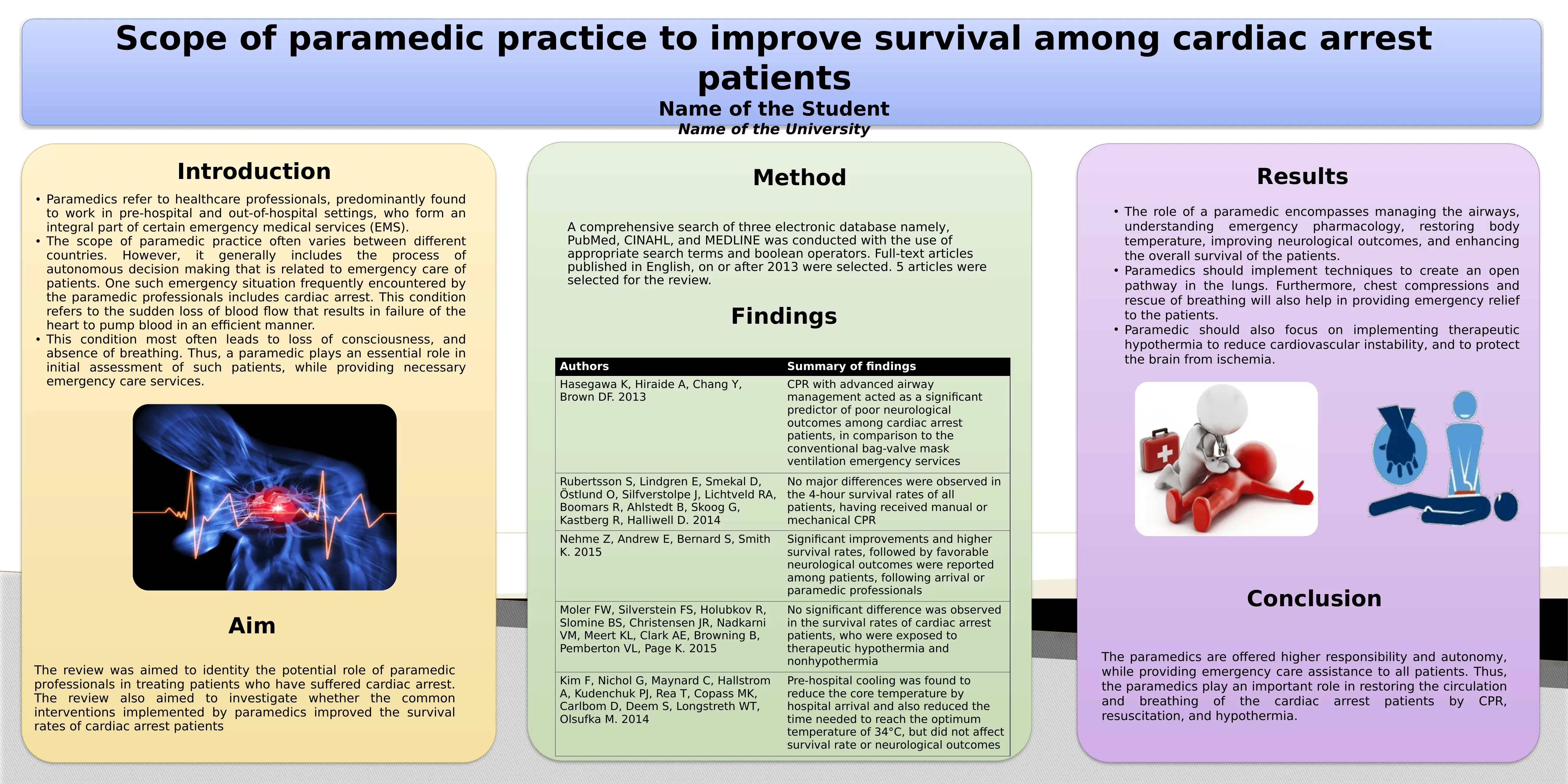The Role of Paramedics in Treating Cardiac Arrest Patients
VerifiedAdded on 2021/05/31
|1
|382
|156
Report
AI Summary
This report examines the critical role of paramedics in the treatment of cardiac arrest patients. It highlights the importance of their pre-hospital care, including airway management, emergency pharmacology, and the use of therapeutic hypothermia to improve patient outcomes. The report is based on a review of articles published since 2013 and emphasizes the significance of CPR, resuscitation, and hypothermia in restoring circulation and breathing in cardiac arrest cases. The findings underscore the paramedics' autonomy and responsibility in providing life-saving emergency care, ultimately contributing to improved patient survival rates. Desklib provides this and other academic resources for students.







![[object Object]](/_next/static/media/star-bottom.7253800d.svg)